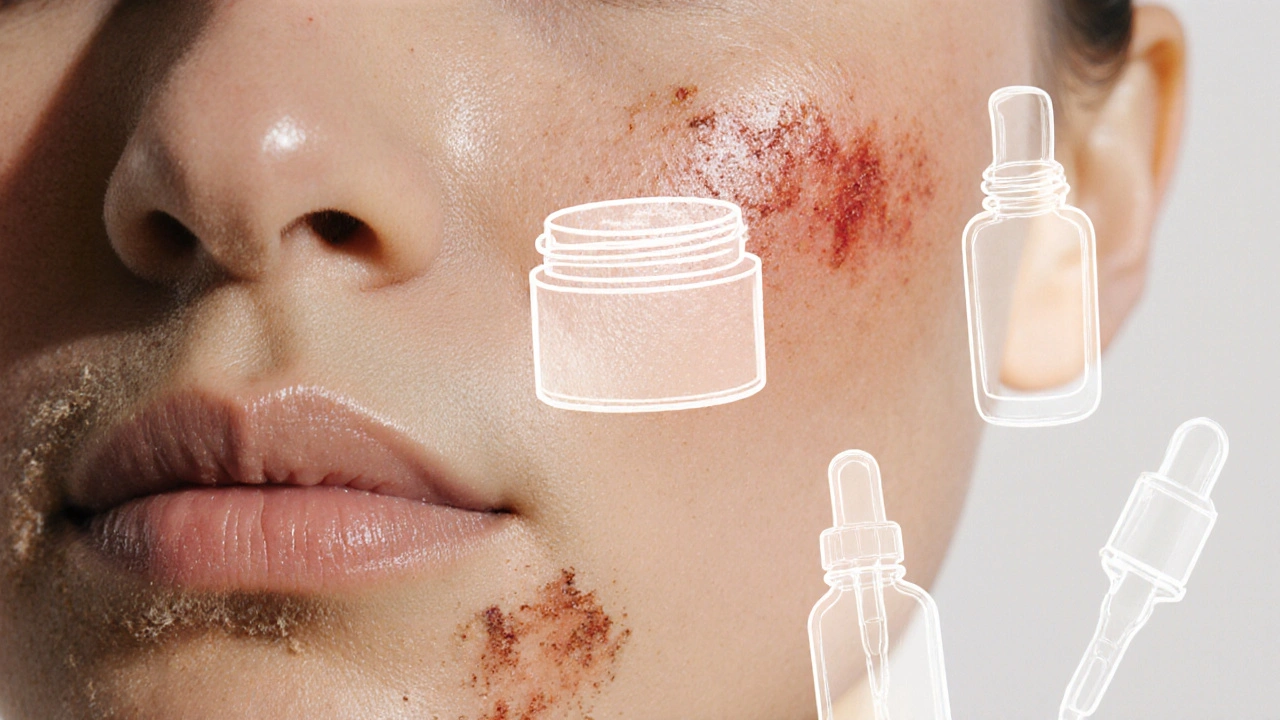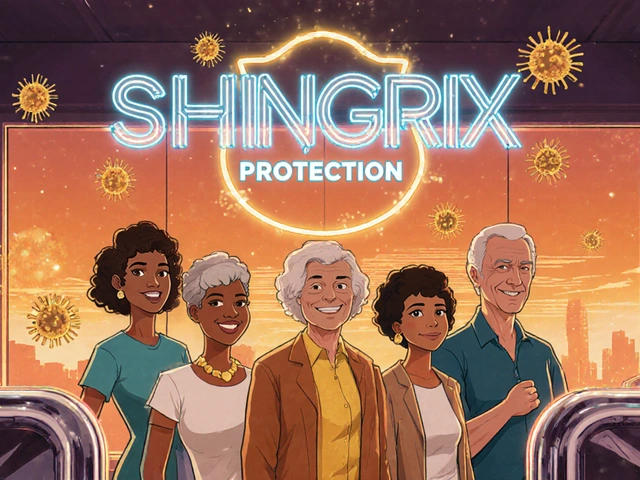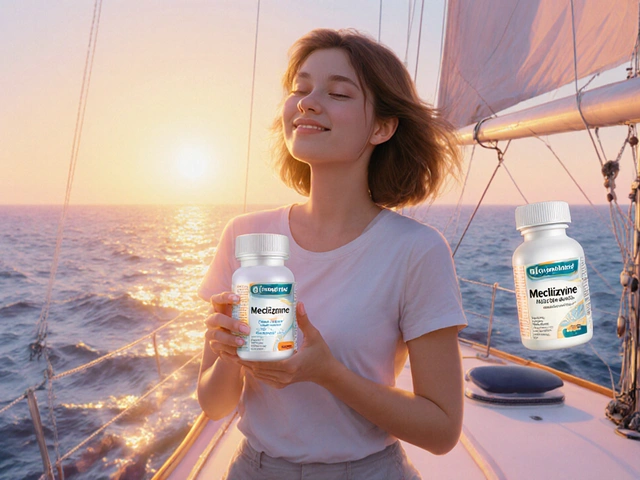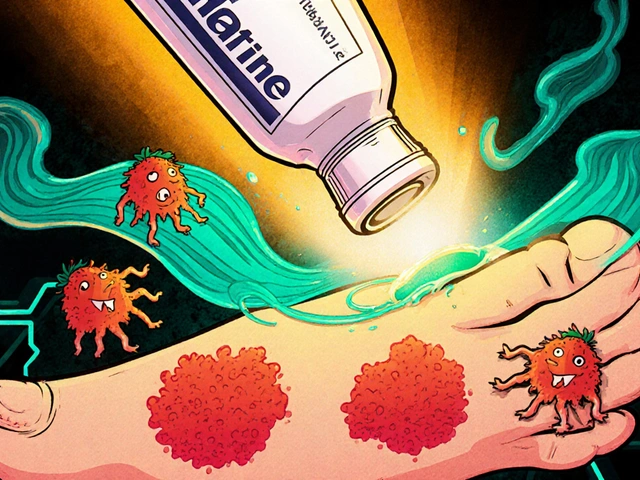Retinoid Selection Tool
This tool helps you find the most appropriate retinoid treatment based on your skin concerns, sensitivity level, budget, and experience. Select your options below to get personalized recommendations.
Quick Summary
- A‑Ret Gel is a prescription tretinoin gel (0.025% or 0.05%) favored for its fast‑acting acne relief and smoother skin texture.
- Alternatives include Retin‑A (cream), Differin (adapalene), Tazorac (tazarotene), and over‑the‑counter retinol.
- Strength, cost, side‑effect profile, and pregnancy safety are the main decision factors.
- For most NZ users, A‑Ret Gel beats cheaper OTC retinol in efficacy but costs about 2‑3× more.
- Start with a low concentration, moisturize, and use sunscreen to minimise irritation.
When you search for "A‑Ret Gel vs alternatives" you’re probably wondering which retinoid will give you clearer skin without blowing your budget. Below you’ll find a straight‑forward rundown that lets you compare the most common options, see where each one shines, and decide which fits your routine.
A‑Ret Gel is a prescription tretinoin gel (available in 0.025% and 0.05% strengths) used for acne, fine lines and hyperpigmentation. It’s a part of the retinoid family, which works by speeding up skin cell turnover and boosting collagen production. In NewZealand the gel is usually written for a 30‑day supply and requires a dermatologist’s script.
What Is Tretinoin and Why Does It Matter?
Tretinoin (also called all‑trans retinoic acid) is the active ingredient behind many prescription retinoids. It binds to retinoic‑acid receptors (RAR‑α, β, γ) in the skin, telling cells to shed old keratin and make fresh cells. The result is less clogged pores, smoother texture, and a gradual fade of dark spots. Because it’s a potent molecule, it also brings a higher chance of irritation, dryness, and photosensitivity.
Major Alternatives at a Glance
Below are the most common retinoid or retinol products you’ll encounter in a NewZealand pharmacy or online store.
- Retin‑A: Tretinoin cream (0.025% or 0.05%) - the classic prescription format.
- Differin (adapalene 0.1% gel) - FDA‑approved over‑the‑counter in many countries, considered gentler than tretinoin.
- Tazorac (tazarotene 0.05‑0.1% cream/gel) - a synthetic retinoid with strong anti‑acne power.
- Retinol: Over‑the‑counter vitaminA derivative, needs conversion to tretinoin inside the skin, so it works slower but is far less irritating.
- Isotretinoin (Accutane): Oral retinoid for severe cystic acne; mentioned here for contrast, but it’s a whole different treatment class.

Side‑Effect Profile Comparison
All retinoids share a baseline of possible irritation. The intensity usually follows this order (most to least): Tazarotene>Tretinoin (gel/cream)>Adapalene>Retinol. Here’s a quick cheat‑sheet of what to expect.
- Dryness & peeling: Common with all, but you’ll notice it first with Tazarotene.
- Redness (erythema): A‑Ret Gel and Retin‑A can cause a “purpling” look after the first week.
- Sun sensitivity: All retinoids increase UV susceptibility; sunscreen (SPF30+) is non‑negotiable.
- Pigment changes: Rare, but high‑strength tazarotene can cause temporary darkening in darker skin tones.
Cost and Availability in NewZealand (2025)
Pricing fluctuates with pharmacy contracts and whether you use PHARMAC subsidies. Approximate average costs for a 30‑gram supply are listed below.
| Product | Active Ingredient & Strength | Prescription? | Typical Use | NZD/30g | Common Side‑effects |
|---|---|---|---|---|---|
| A‑Ret Gel | Tretinoin0.025%-0.05% (gel) | Yes | Acne, fine lines, hyperpigmentation | $70-$85 | Dryness, redness, peeling |
| Retin‑A | Tretinoin0.025%-0.05% (cream) | Yes | Acne, photo‑aging | $65-$80 | Similar to A‑Ret Gel, slightly more irritation on sensitive skin |
| Differin | Adapalene0.1% (gel) | No (OTC) | Mild‑moderate acne, maintenance after prescription | $30-$45 | Mild dryness, occasional burning |
| Tazorac | Tazarotene0.05%-0.1% (cream/gel) | Yes | Severe acne, psoriasis, pronounced photo‑aging | $90-$110 | High dryness, irritation, potential erythema |
| Retinol | VitaminA (0.5%-2%) - OTC serum/cream | No | Gentle anti‑aging, mild acne | $25-$55 | Very low irritation, slower results |
How to Choose the Right Retinoid for You
Pick a product based on these three questions:
- What’s my skin’s tolerance? If you’ve never used a retinoid, start with Differin or a low‑strength retinol. If your skin handles it, upgrade to A‑Ret Gel or Tazorac.
- What’s my primary concern? For stubborn comedonal acne, tretinoin (A‑Ret Gel or Retin‑A) is gold. For mild breakouts plus anti‑aging, adapt‑gel or retinol works.
- What’s my budget? Retin‑A and A‑Ret Gel sit in the mid‑range; Tazorac is premium; retinol and Differin are budget‑friendly.
Here’s a quick decision tree you can sketch on a napkin:
- Never used retinoid → start with Differin 0.1% gel.
- Comfortable with mild irritation → move to A‑Ret Gel 0.025%.
- Need fast acne clearance and can afford it → try Tazorac 0.05%.
- Pregnant or planning pregnancy → avoid all prescription retinoids; stick with gentle retinol (or consult your doctor).
Practical Tips for Using A‑Ret Gel (and Its Peers)
Even the best product can flop if you misuse it. Follow this routine:
- Cleanse gently: Use a sulfate‑free cleanser, pat dry, wait 15‑20minutes to ensure skin is dry (wet skin heightens irritation).
- Apply a pea‑size amount: Spread a thin layer over the entire face, not just blemishes. This helps prevent “spot‑treatment” flare‑ups.
- Moisturize after: Wait 5‑10minutes, then lock in hydration with a ceramide‑rich moisturizer. Some dermatologists recommend “sandwich” method - moisturizer, then A‑Ret Gel, then moisturizer again.
- Sunscreen is mandatory: SPF30+ broad‑spectrum, reapply every 2hours when outdoors.
- Frequency: Start 2times/week, gradually increase to every night as tolerance builds. If you see severe peeling, cut back.
Similar steps work for Retin‑A, Differin, and Tazorac, though the frequency can differ: Differin often tolerates daily use sooner, while Tazorac might need a 3‑day‑on/3‑day‑off schedule initially.
When to See a Dermatologist
If any of these apply, book an appointment:
- Severe cystic acne that doesn’t improve after 8weeks of consistent retinoid use.
- Redness that persists beyond the first two weeks and is accompanied by swelling.
- Pregnancy, planning pregnancy, or breastfeeding - prescription retinoids are contraindicated.
- Existing skin conditions like eczema or rosacea - a doctor can suggest a gentler alternative.
Bottom Line: Which One Wins?
There’s no universal champion; the “best” retinoid matches your skin type, goals, and wallet. In a nutshell:
- A‑Ret Gel - best for rapid acne clearance and noticeable anti‑aging benefits, provided you can handle moderate irritation.
- Retin‑A - similar efficacy to A‑Ret Gel but in cream form, which some find less greasy.
- Differin - the most affordable entry point, gentle enough for beginners, still effective for mild‑moderate acne.
- Tazorac - powerhouse for stubborn acne or psoriasis, but pricey and harsher.
- Retinol - ideal for anti‑aging fans who can’t tolerate prescription strength.
Choose based on the decision tree above, and you’ll avoid wasting money on a product that’s either too weak or too aggressive.
Frequently Asked Questions
Can I use A‑Ret Gel together with other acne products?
Yes, but keep it simple. Pair it with a gentle cleanser and a non‑comedogenic moisturizer. Avoid other strong actives like benzoyl peroxide or salicylic acid on the same night, as they can amplify irritation. If you want to keep a benzoyl peroxide wash, use it in the morning instead.
How long does it take to see results with A‑Ret Gel?
Most users notice reduced redness and fewer new pimples after 4‑6weeks of consistent nightly use. Visible improvement in fine lines and hyperpigmentation typically appears after 3‑4months.
Is it safe to use A‑Ret Gel during pregnancy?
No. All topical retinoids, including A‑Ret Gel, are classified as CategoryC and are generally avoided during pregnancy and breastfeeding. Switch to a gentle retinol or consult your OB‑GYN for alternatives.
Can I switch from Differin to A‑Ret Gel without a break?
It’s best to taper. Reduce Differin to every other night for a week, then pause for 2‑3days, and start A‑Ret Gel at a low frequency (2times/week). This helps your skin adjust to the stronger tretinoin.
What’s the biggest mistake people make with retinoids?
Skipping sunscreen. Retinoids thin the outer skin layer, making UV damage more likely. Sunburn can undo weeks of progress, so daily SPF is non‑negotiable.






Winnie Chan
October 13, 2025 AT 17:52Oh great, another endless spreadsheet of retinoid data to skim through.
Kyle Rensmeyer
October 19, 2025 AT 10:22I bet the pharma bigwigs don’t want you to know that A‑Ret Gel is just a cash‑grab 😒
Rod Maine
October 25, 2025 AT 02:52Thisss article delves into the nuanced pharmacokinecticz of tretinoid formulations, a topic most mere mortals overlook.
Othilie Kaestner
October 30, 2025 AT 18:22Honestly, if you can’t afford the top‑tier Aussie‑made retinoids you’re just chasing a fad.
Sebastian Samuel
November 5, 2025 AT 10:52🤔 Why bother with flags when the skin cares about chemistry, not borders?
Mitchell Awisus
November 11, 2025 AT 03:22I see where you’re coming from, but it’s worth noting that the clinical trials for A‑Ret Gel show a comparable safety profile to other tretinoin products; proper usage mitigates most concerns.
Annette Smith
November 16, 2025 AT 19:52Choosing the right retinoid is really a matter of balancing three main factors: skin tolerance, desired results, and budget.
First, evaluate how your skin reacts to active ingredients; if you’ve never used a retinoid, start with a low‑strength option like Differin or a gentle retinol to gauge irritation.
Second, define your primary goal – whether it’s acne, fine lines, or hyperpigmentation – because some formulations target specific concerns more effectively.
Third, consider cost; prescription tretinoin (A‑Ret Gel, Retin‑A, Tazorac) sits in a mid‑to‑high price range, while OTC alternatives like retinol or Differin are more affordable.
When you’ve identified your tolerance level, you can gradually step up potency: two nights per week for the first month, then increase to three, and eventually nightly if your skin tolerates it.
Always apply the product to clean, dry skin and wait at least 15‑20 minutes after washing to reduce irritation.
Follow with a moisturizer – the “sandwich” method (moisturizer‑retinoid‑moisturizer) works well for many users.
Sun protection is non‑negotiable; use broad‑spectrum SPF30+ daily, reapplying every two hours when outdoors.
If you notice excessive redness, peeling, or burning, cut back frequency or switch to a lower concentration.
For acne‑prone skin, tretinoin (A‑Ret Gel or Retin‑A) tends to be more effective than retinol because of its higher potency.
For anti‑aging, retinol can still deliver improvements with less irritation, especially for beginners.
Patients with rosacea or eczema should consult a dermatologist before starting any retinoid.
Pregnant or nursing individuals must avoid prescription retinoids altogether; a gentle retinol may be permissible after medical advice.
Monitoring progress is key – take photos every four weeks to see subtle changes that may not be apparent day‑to‑day.
In summary, start low, go slow, moisturize, protect, and adjust based on how your skin responds.
beth shell
November 22, 2025 AT 12:22A good summary but I’d add that sunscreen is non‑negotiable.
khushali kothari
November 28, 2025 AT 04:52From a dermato‑pharmacoeconomic standpoint, the incremental cost‑effectiveness ratio (ICER) of A‑Ret Gel versus generic retinol remains within the willingness‑to‑pay threshold for moderate acne severity, assuming adherence rates above 80%.
Brandon Smith
December 3, 2025 AT 21:22While the numbers are appealing, one must consider the ethical implications of prescribing potent retinoids without thorough patient education, lest we exacerbate health disparities.
darwin ambil
December 9, 2025 AT 13:52I’ve tried A‑Ret Gel on my own skin and the results were decent, but the sting was real.
Kelvin Van der Maelen
December 15, 2025 AT 06:22Wow, the drama of peeling skin is real! My face looked like a tomato for a week 😂